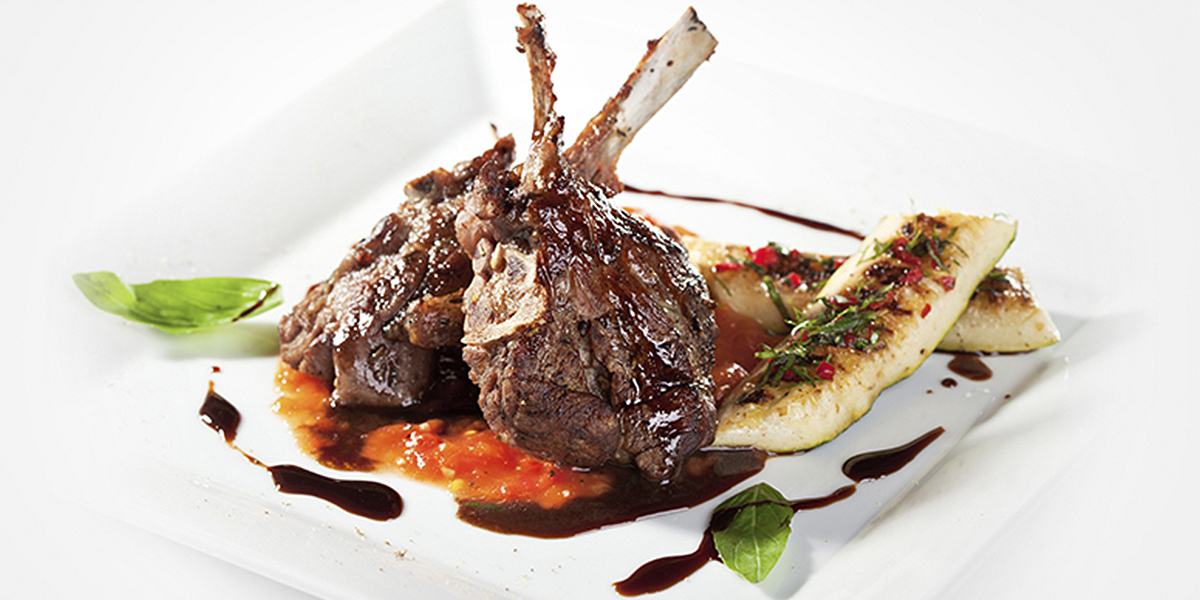
Are Your Garnishes Working Hard Enough?
Add visual appeal to dishes and ensure the taste is delicious

By Joe Abuso
When trying to make dishes look as good as they taste, the goal is to deliver visual appeal and flavor while keeping an eye on the profit margin. Think of an added-value principle for presentation. It's important that the ingredient is money well spent. The inedible garnish — such as fancy vegetable carvings — adds nothing to the flavor and can be labor intensive. Guests can nibble on them, but they aren't exactly the best example of an edible garnish. The same can be said for sprigs of herbs. Guests dutifully pull them out and might give them a sniff but no one eats them; there is no added value here.
A simple peppery bunch of fresh watercress is sometimes enough to finish grilled fish; other times a fresh fig filled with a chestnut mousse tops off a perfect roasted leg of lamb. Part of the added-value principle is taste. Beautiful organic pansies might be tempting, but more often than not, they come back on the plate, food gone, flowers pushed to the side. The idea of edible flowers is laudable, but if no one eats them, it defeats the purpose. That might be different in the pastry department. Coated with sugar and paired with dessert, the flowers tend to be eaten rather than shoved aside. That’s added value.
Other not-so-useful garnishes include tomato roses and scallion tassels. Instead, think more creatively, such as sage leaves fried in fresh peanut oil and tossed in kosher salt. They can add wonderful flavor and crunch to braised veal shank. Many items from the fryer, in fact, can add crunch and visual appeal.
Vegetable chips of all sorts make great finishes. For a twist, toss them with freshly ground, toasted spices like coriander, Spanish anise seed, and white pepper. Create a blend to match the concept or the dish.
Give your dishes the additional touches that guests will truly notice as items that not only attach visual appeal but taste delicious as well. This improves customer experience. Use your imagination and keep an eye on the plates as they return from the dining room. Surely you'll find fewer fried lotus chips returning than sprigs of rosemary. If they clean their plates, you're on the right track.
Joe Abuso is a graduate of the Culinary Institute of America, principal of Genuine Hospitality Consulting, and regular contributor to Restaurant Startup & Growth, where parts of this article first appeared.
Read Related Stories:
Small Plates Deliver Big Experience
Time to Rethink the Combo Meal